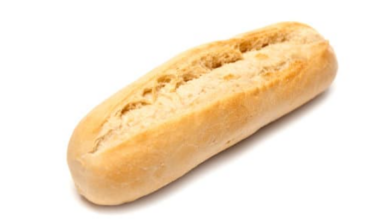How Wet Should Baguette Dough Be? Here’s The Answer

What To Know
- Dough hydration refers to the ratio of water to flour in a dough recipe.
- Not allowing the dough to ferment properly can result in a baguette with an underdeveloped flavor and texture.
- Mastering the art of baguette baking requires a deep understanding of dough hydration and its impact on the final product.
Crafting the perfect baguette requires a delicate balance of ingredients and techniques, with dough hydration playing a crucial role. The amount of water in the dough directly impacts its texture, flavor, and overall quality. So, how wet should baguette dough be to achieve that irresistible crust and airy crumb? Let’s delve into the world of baguette dough hydration and discover the secrets to creating exceptional baguettes.
Understanding Dough Hydration
Dough hydration refers to the ratio of water to flour in a dough recipe. It is typically expressed as a percentage, with higher percentages indicating wetter dough. For baguettes, the ideal dough hydration ranges between 65% and 75%. This range allows for a dough that is easy to handle, extensible, and capable of producing a well-developed gluten structure.
Effects of Dough Hydration on Baguettes
The hydration level of baguette dough has a profound impact on various aspects of the final product:
1. Texture: Wetter doughs result in baguettes with a softer and more open crumb, while drier doughs produce a denser and chewier texture.
2. Crust: Wetter doughs tend to form a crispier and thinner crust, while drier doughs yield a thicker and harder crust.
3. Flavor: Wetter doughs often have a more pronounced flavor, as the water helps extract and release more flavors from the flour.
4. Handling: Wetter doughs are generally more extensible and easier to shape, making them ideal for forming the long and slender shape of baguettes.
Achieving the Right Hydration Level
Determining the ideal hydration level for baguette dough is a combination of art and science. Several factors influence the appropriate hydration, including:
1. Flour Type: Different flours have different absorption capacities. For example, bread flour, with its higher protein content, can handle more water than all-purpose flour.
2. Desired Texture: Bakers can adjust the hydration level to achieve their desired texture. Wetter doughs for a softer crumb and drier doughs for a chewier crumb.
3. Ambient Conditions: The temperature and humidity of the environment can affect the dough’s hydration needs. Warmer and more humid conditions may require slightly drier doughs to prevent over-fermentation.
Tips for Working with Wet Baguette Dough
Working with wet baguette dough can be challenging, but with the right techniques, it’s possible to achieve excellent results:
1. Use a Stand Mixer: A stand mixer equipped with a dough hook can help knead wet doughs more effectively and efficiently.
2. Autolyse: Autolyse, a resting period before kneading, allows the flour and water to hydrate fully, making the dough easier to work with.
3. Stretch and Fold: Instead of traditional kneading, use the stretch-and-fold method to develop the gluten structure without overworking the dough.
4. Control Fermentation: Wet doughs ferment more quickly, so careful monitoring is necessary to prevent over-fermentation, which can lead to a dense and gummy crumb.
Common Mistakes to Avoid
To ensure successful baguette baking, avoid these common mistakes:
1. Over-Hydrating the Dough: Adding too much water can result in a sticky and unmanageable dough that is difficult to shape and handle.
2. Under-Hydrating the Dough: Not adding enough water can lead to a dry and dense baguette with a tough crumb.
3. Over-Kneading the Dough: Over-kneading can damage the gluten structure, resulting in a tough and chewy baguette.
4. Ignoring Fermentation Times: Not allowing the dough to ferment properly can result in a baguette with an underdeveloped flavor and texture.
The Bottom Line: Striking the Perfect Balance
Mastering the art of baguette baking requires a deep understanding of dough hydration and its impact on the final product. By carefully controlling the amount of water in the dough, bakers can achieve the perfect balance of texture, flavor, and crust that makes baguettes so irresistible.
Basics You Wanted To Know
1. Q: What is the ideal dough hydration for baguettes?
A: The ideal dough hydration for baguettes typically ranges between 65% and 75%.
2. Q: How does dough hydration affect the texture of baguettes?
A: Wetter doughs produce baguettes with a softer and more open crumb, while drier doughs yield a denser and chewier texture.
3. Q: How does dough hydration affect the crust of baguettes?
A: Wetter doughs tend to form a crispier and thinner crust, while drier doughs yield a thicker and harder crust.
4. Q: How does dough hydration affect the flavor of baguettes?
A: Wetter doughs often have a more pronounced flavor, as the water helps extract and release more flavors from the flour.
5. Q: How can I determine the right hydration level for my baguette dough?
A: Consider factors such as flour type, desired texture, and ambient conditions to determine the appropriate hydration level.
6. Q: What are some tips for working with wet baguette dough?
A: Use a stand mixer, autolyse the dough, use the stretch-and-fold method, and control fermentation carefully.
7. Q: What are some common mistakes to avoid when working with baguette dough?
A: Avoid over-hydrating the dough, under-hydrating the dough, over-kneading the dough, and ignoring fermentation times.





